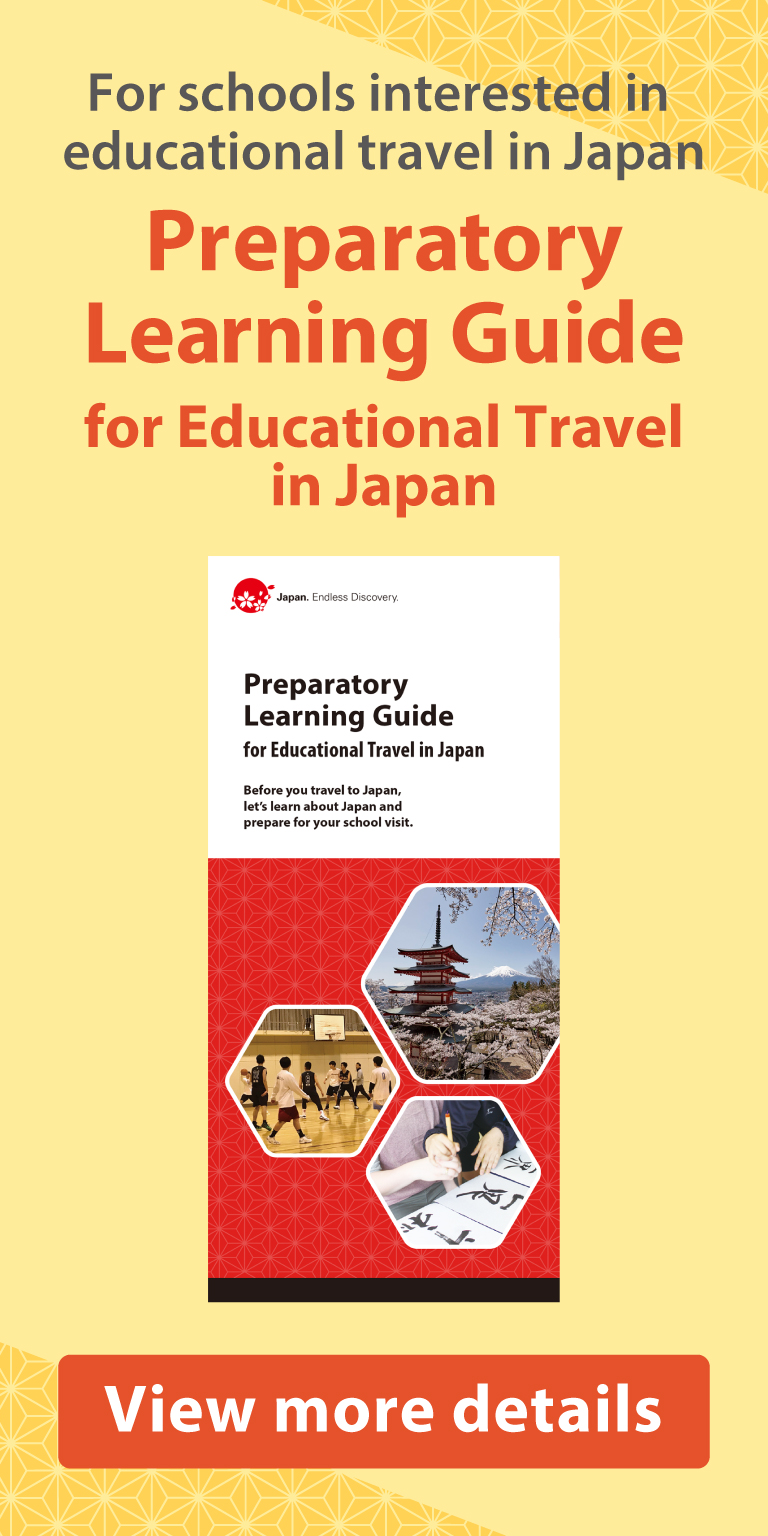How Japanese Learn Multiplication In Primary School
Curriculum Outline
The Japanese schoolhouse system primarily consists of 6-yr elementary schools, three-year inferior high schools and three-year loftier schools, followed past a two-or-iii-year inferior colleges or a four-year colleges. Compulsory education lasts for 9 years through elementary and junior loftier school. School exchanges during Japan Educational Travel are mainly implemented in junior high and high schools. For physically or mentally challenged students, there is a system chosen "Special Needs Education" to support special students to develop their self-reliance and thus enhance their social participation.
School Education Nautical chart

Introduction to Schools in Japan
Most Schools in Nippon. An introduction mainly focused on standard junior high and high schools in Japan.
outcomeSchoolhouse Timetable
Public schools in Nippon accept classes five days a week, from Monday to Friday. At that place are also schools that accept classes on Saturday. In junior high and loftier schools, at that place are six grade periods each day, typically lasting 50 minutes for each. Later classes, students clean the classrooms in shifts and so start their club activities. In that location are a multifariousness of clubs such as cultural and sports ones.
An Example of School Timetable

issueAcademic Agenda
In principle, the school twelvemonth begins in April and ends in March of the following twelvemonth. Most schools prefer a three-semester system, with the first semester from April to August, the second semester from September to December, and the third semester from January to March. There is also a summer interruption (from the end of July to the end of August), a winter break (from the cease of December to the commencement of January), and a jump intermission (from the cease of March to the beginning of April).
An Instance of Bookish Agenda

issueSchoolhouse System
Each school has a master, a vice principal, teachers, a school nurse, and other administration staff. As the chief executive, the principal assumes all responsibilities of the school, including the courses provided and related administrative piece of work. The vice principal supports the principal to manage administrative affairs of the school and to be in charge of pupil's educational activities and curriculum as well. Furthermore, in order to ensure school's smoothen performance, teachers take on diverse responsibilities, such equally taking care of educational activities, students'schoolhouse life, and employment guidance for students after graduation. Many schools as well plant their ain committees, for case a International Exchange Promotion Committee, and others.
Related Data
Special Features of Japanese Education
Virtually Features of Japanese Teaching.
eventRegarding the Level of Teaching
The level of Japanese education is high even by world standards. In OECD'due south Programme for International Pupil Cess (PISA) aimed at fifteen-year-olds, Japanese students recorded high levels of achievement, particularly in science related areas. Educational activities outside of school besides flourish, and programs leading to advanced education are implemented.
Enrollment in high schools, the second-half of secondary instruction, reaches over 90%, and the enrollments in higher are also high reaching over l%. Admission to high schools and colleges is mainly through archway exams, held from Jan to March.
Source: OECD
location_cityForeign Language Education
English language is a compulsory discipline in junior high and high schools. There are likewise simple schools that introduce English language education from intermediate grade classes. In some high schools, autonomously from English, students are besides immune to take courses in Chinese, Korean, French, German, etc.
location_cityStudent Clubs
Educatee clubs are a characteristic part in Japan'due south school education. Under teachers' guidance, students with the aforementioned interests in sports, cultural activities, or fields of study voluntarily get together together afterwards classes and on days off. In that location are also numerous pupil clubs revolving effectually Japanese traditional sports and culture, such as judo, kendo(Japanese swordsmanship), sado (Japanese tea ceremony), kado (Japanese flower arrangement), shodo (Japanese calligraphy), etc. Club activities also provide students with the chance to participate in school exchange and friendly matches.
Sports Clubs
- Baseball
- Soccer
- Volleyball
- Basketball game
- Track and Field
- Pond
- Judo
- Kendo (Japanese swordsmanship) etc.
Culture Clubs
- School Band
- School Choir
- Drama
- Art
- Literature
- Kado (Japanese bloom arrangement)
- Sado (Japanese tea anniversary)
- Shodo (Japanese calligraphy) etc.


Related Information
Learn Near School Life in Japan
arrow_rightSee the total listingSTORIES
arrow_rightSee the full listSource: https://education.jnto.go.jp/en/school-in-japan/japanese-education-system/
Posted by: capratheap1957.blogspot.com


0 Response to "How Japanese Learn Multiplication In Primary School"
Post a Comment